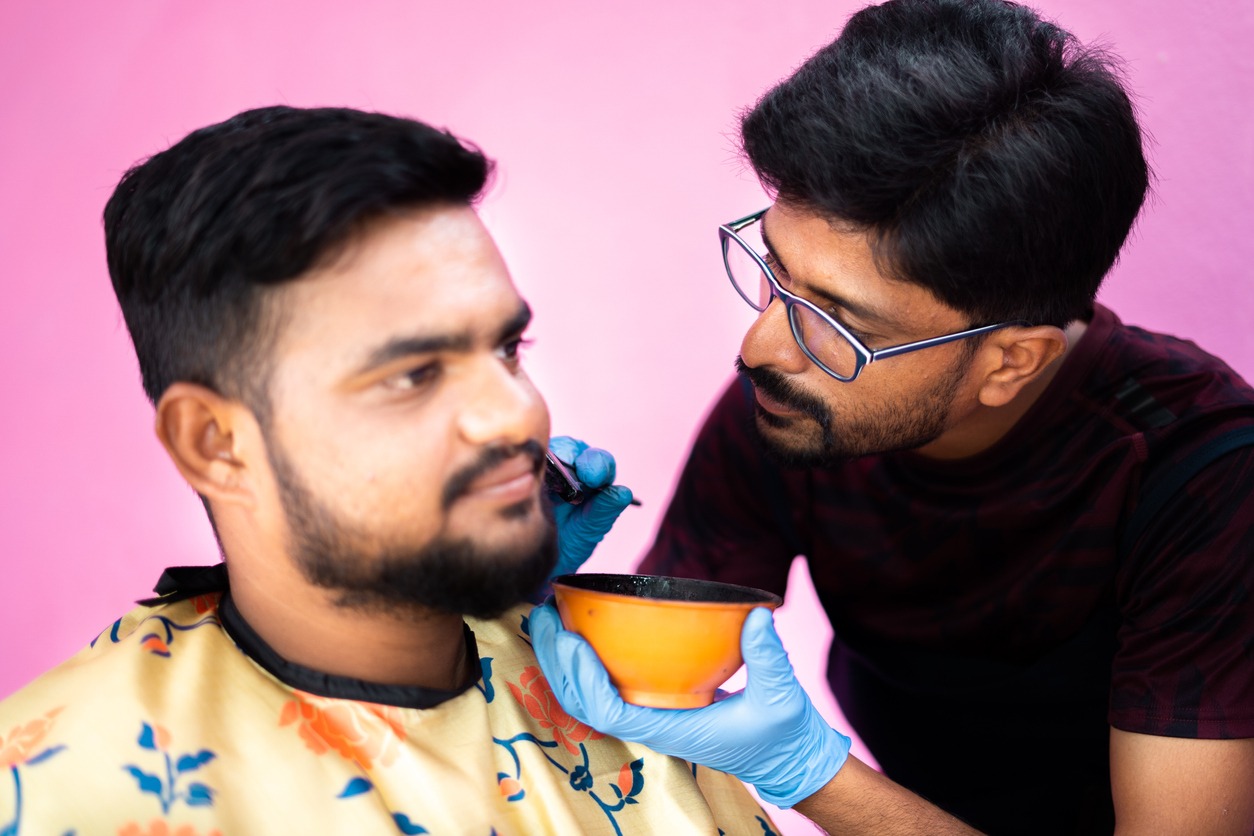As long as man has existed, beards have also existed. The earliest records indicate that Egyptians grew hair on their chins. They hennaed, frizzled, and dyed their beards. This was their sense of fashion at the time.
Today, it is interesting to see that a culture of beard dyeing that started back in 3000 B.C. is still considered stylish.
Many people are also embracing the beard growing culture. We celebrate ‘No-Shave November’; plus, an increasing number of male celebrities have also been spotted with well-maintained beards.
The Issue of Beard Maintenance
For some men, it can be challenging to grow a full and proper beard. However, the greatest challenge other than beard growing is beard maintenance.
The main thing to understand here is that facial hair does not grow evenly. It usually grows at different lengths, while a person who has just started growing a beard may notice it being patchy during the initial days.
A beard can also be bushier in some spots, or different areas might take different colors. Beard hair compared to the hair on your head is usually lighter in color. If it’s not well maintained, however, a beard can make you look much older than you really are.
For maintenance purposes, anyone with a beard may want to check out what you need in a good beard grooming kit. However, the regular application of beard dye will also help a lot in making your beard presentable.
Want That Younger Looking Beard? – Beard Coloring
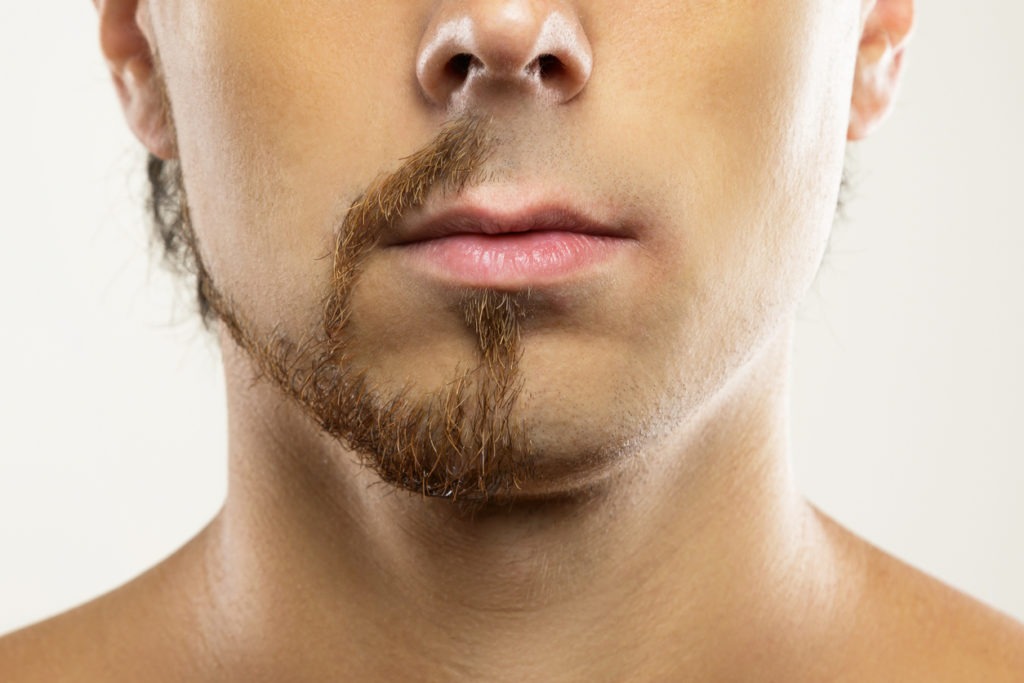
The reason why people use dye on their head also doubles up as the same reason why people use it on their beard – to look young. Some cultures explicitly encourage beard dyeing to cover up white hairs.
Is Dyeing Your Beard a Good Idea?
Beard coloring is a tricky business; if it’s not done properly, it can leave you looking like an over-dyed man who is too old to realize that his beard color does not match. However, when done properly, beard dyeing can be the solution to maintaining the look that you have always craved.
Before going for the dyeing process, make sure you use products that are designed to dye beards safely. There are lots of beard dyes in the market today, with some of them being suitable for use at home. Before you buy any of them, arm yourself with some knowledge of what to expect and what to look for.
Natural Beard Dye
If you have very sensitive skin, you need natural beard dyes. Some synthetic beard dyes may cause itchiness and even burns. Since natural beard dyes use natural ingredients then you don’t have to worry so much about damaged skin or facial hair. However, it is important to keep the instructions in mind when applying any kind of dye, natural or synthetic. Even natural dyes like henna can make the hair brittle and weak if you leave it on too long.
Why Should We Dye Beards?
Beard maintenance is important both for the sake of hygiene and physical appearance. Some people may need beard dye even if they don’t need dye on their head. Below are just a few reasons why we should be thinking about dyeing beards:
- Facial hair is usually inconsistent in its coloring, as most people with a beard will affirm. Those who have dark hair on their heads might see their beard hairs mixed in with white, blonde, or brown strands. This will not just make the beard look untidy, but also make it look less full than it actually is
- Some people might experience a salt-and-pepper beard even if they’re in their 20s, which makes them look much older than they really are
- Plucking gray or white hairs might be possible, but it’s a pain to weed out just the problematic ones. Plus, new gray hairs can come in almost every single day, while dye usually lasts for a few weeks
- Beard hairs are also coarser and thicker than the hair on the head. Beard dyes can penetrate to these hairs without adversely affecting the skin on the face.
What Is Beard Dye?
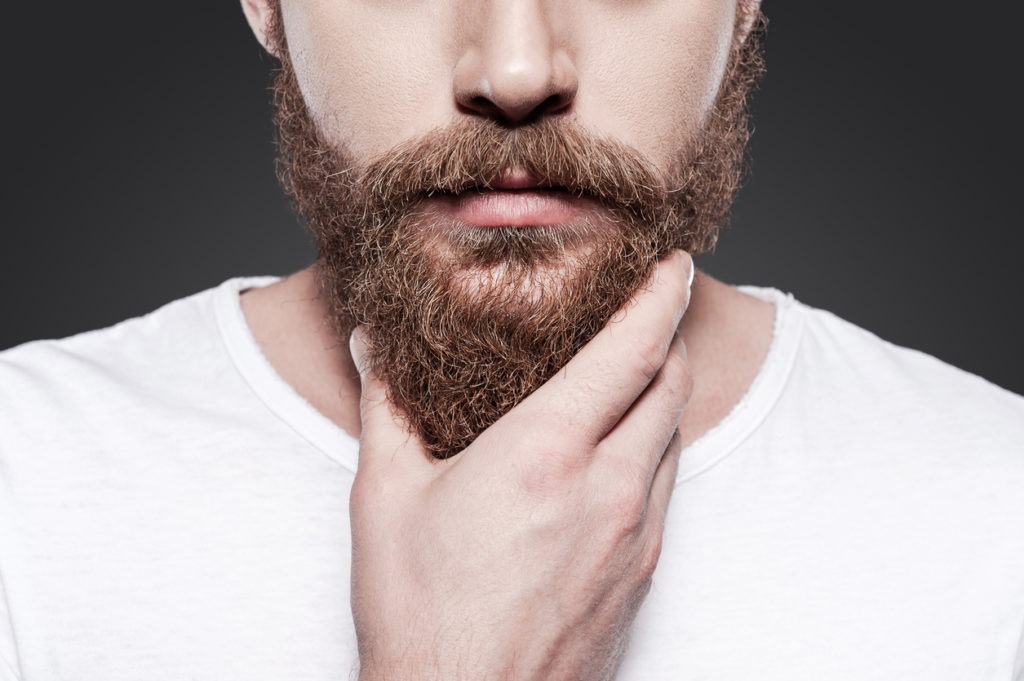
Beard dyes are a bit different from regular hair dyes. Here are some of the key differences:
1. Factoring in different types of skin
The formula of beard dyes is usually gentler in order to suit the sensitive facial skin.
2. Wouldn’t completely cover all the hairs
Most beard dyes will not give a complete block coverage, which will result in a ‘shoe polish’ effect on the face. Alternatively, the dye in beard formulas use demi-permanent shades that get the blonde or gray/white hairs to a central color. The result will then fade and become subtle enough to blend into the natural color of the beard
3. Suitable for many uses
When you buy a box or tube of regular hair dye, it’s usually meant for just one use. On the other hand, beard dye manufacturers know that a bearded man will want to get several uses out of one container. This is why the beard hair dye bottles will be packaged for multiple uses. The standard time for using up one container of beard dye is around three months.
Of course, the amount of time you take in using up the container will depend on how full your beard is, how long it is, and whether you’re sharing the dye with anyone else.
4. All-in-one products
Demi-permanent beard dye brands also have all-in-one options for their customers. This means that men use one container for dyeing their hair, body hair, beard, and so on. However, the dye is first made safe enough to apply on facial hair. Taking this into account usually makes it suitable for all other parts of the body as well.
5. Non-staining
Most modern beard dye formulas come with a guarantee that they won’t stain any skin. Even so, we should always use gloves when dyeing our hair ourselves. We should also take care not to get any product on clothes, rugs, walls, carpets, etc. The gloves, along with an applicator, should be included in the packaging.
6. Different durations
How long can we expect a beard dye to last? The answer lies in the kind of brand you get as well as some other factors.
For instance, dyeing a full beard usually means that you can ignore the gray roots for around two weeks or so. If you’re dyeing a short beard or stubble, on the other hand, each trimming may require a touch up.
Another consideration is the way you maintain the beard dye, especially when washing your beard. It may help to check out the best beard shampoos and conditioners before dyeing your beard.
Ingredients in Beard Dyes
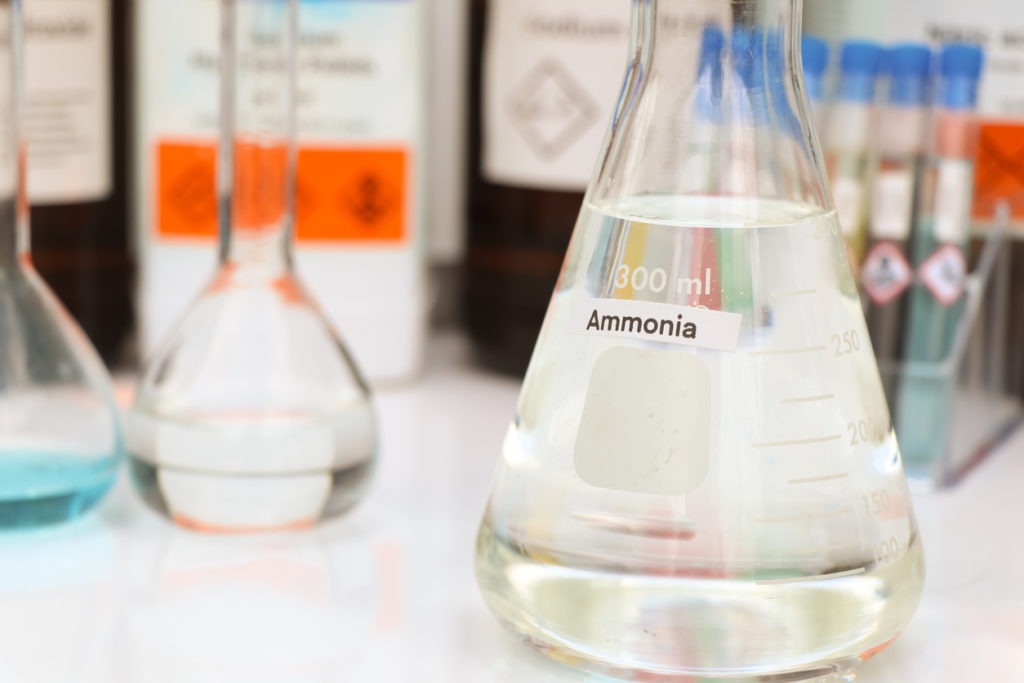
When it comes to beard dye ingredients, we should take care about at least two possible components.
The first one is ammonia. While it’s not used in most modern dyes anymore, it might be included in the cheaper drugstore versions. You can usually smell the ammonia in a dye even before application.
Along with having a very unpleasant smell, ammonia can also damage the hair cuticle. It’s included to help the color penetrate to the hair, but the results aren’t worth the long-term damage.
The other ingredient to avoid is PPD or Para-phenylenediamine. This can trigger an allergic reaction. Fortunately, it’s usually only included in permanent dyes, so demi-permanent beard dyes usually don’t have this ingredient anyway.
If you’re in search of a safe, high-quality demi-permanent beard dye, make sure to look out for PPD on its list of ingredients. If the product contains this ingredient, don’t go for it.
Choosing the Right Shade of Beard Dye
The usual rule for choosing beard dye shade is to go for a slightly lighter hue than your intended color. This is because:
- One, we can always build up a beard dye to make a darker shade, but we can’t immediately lighten it if it’s too dark
- The lighter shade allows the beard dye to make the gray or white hairs a more central color and therefore lend them in with the rest of the beard. The lighter color won’t affect the dark hairs.
Tips for Applying Beard Dye at Home

If you’re interested in applying beard dye at home, here are some general tips to keep in mind:
- You don’t have to wash your beard first. Ideally, wash it in the morning or the night before. You want some natural oils in the beard to help soak in the color better
- Certain brands may advise fresh washing, so follow their instructions accordingly
- If you’re dyeing mustaches or short beards, plan your trimming after the dye job. This will allow you to dye longer hairs and avoid contact with the skin. After you’re done, choose one of the best beard and mustache trimmers to maintain your look.
- Before dyeing, make sure the room or surrounding area is free of clutter. You may also want to wear some old clothes that you don’t mind staining. Make sure to wear gloves.
- Mix the formula according to instructions and take care when applying. Leave on the dye as long as the directions tell you to. Don’t leave it too long, or the dye may cause damage
- Wash off the dye in a shower or by using a standard cleanser. Try not to splash the surroundings too much; taking a shower at the same time will make for the cleanest experience.
Fortunately, home beard dyes are now very easy to use. Certain brands may provide pre-mixed options, while others may be temporary for those who don’t want to take risks. Whatever the case, make sure to read all the instructions and directions first. If the resulting color is too light, the dyes are buildable and will allow you to add another coat.
Pros and Cons of Getting a Beard Dyed by a Professional
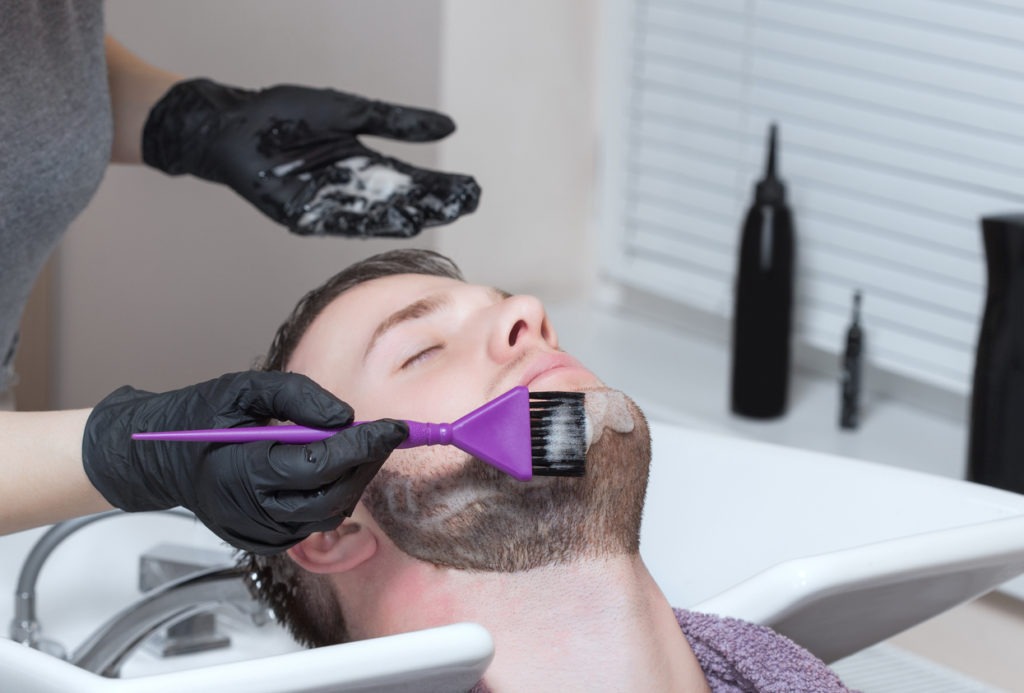
Some men may wonder whether they should spend the money for a professional to dye their beard, or take the plunge and do it themselves. The pros and cons below should help us make a decision about this matter:
Pros:
- A salon or even a professional visiting your home will probably give you a more well-blended result than any dyeing attempts at home.
- The resulting color is likely to be more natural and not splotchy or patchy
Cons:
- Both professional dyes and DIY jobs at home will last for the same amount of time, since that depends mostly on your hair growth rate. Simply put, even the most expensive dye job does not guarantee results that last longer
- Professional services are expensive; on the other hand, doing it yourself at home will be more cost-effective.
- Making an appointment at the salon might be a hassle for some, while the waiting and overall services will take up a lot of your precious time
FAQs
The details about beard dyes above can really help anyone who wants to maintain their beard and give it the best look possible. Here are some frequently asked questions that might help you out even further:
Q: Can we dye our beard at home?
It is possible to dye a beard at home, but we should take care to pick out a quality product that’s especially made for beards.
Q: How can we perform a patch test for beard dyes?
The directions for a patch test will be on the package of your beard dye. Make sure to follow them carefully, as the skin on the face can be quite sensitive and prone to irritation from a new product. If you don’t have the instructions, the general steps for a patch test include:
- Mix a little dye from the package
- Apply the dye to a small area of skin, not hair; the skin should be near your intended application site
- Wait 24 hours or more; keep checking for any reactions such as discoloration, itching, redness, swelling, or other forms of discomfort. If there are any, you may want to go for another brand of dye
- For beard dyes, the test area should be behind the ear or the side of the neck–as close to the face as possible
Q: Who should not use beard dyes?
People with skin conditions like acne or rosacea shouldn’t use beard dyes or any products on their skin without first consulting a dermatologist. The same goes for anyone who has very sensitive skin or when the patch test shows a negative reaction.
Q: How long can we expect beard dyes to last?
Most permanent dyes will last until the beard hair grows out. The dye will only go away when we trim or cut our beard, or shave it off.
Semi-permanent dyes may last for three to six weeks.
Q: What if we don’t like the result of a beard dye?
Similar to dyeing hair, someone may not like how their beard looks after a dye job. The best option then is to get an appointment with a professional hairdresser and change the beard color to something else.
If you’ve used semi-permanent dye, you can make a paste of water and baking soda to get it off. Take a teaspoon of baking soda and add enough water to make a paste you can spread on the beard. Massage it and rinse off after 15-20 minutes.
A more drastic measure will be shaving off your beard. This will mean waiting for a long enough growth to try another type of dye or to get your original look back again.
Conclusion
Whether you want to try an interesting new shade or just cover up your beard grays, it’s logical to think a little before trying any beard dyes. Before the actual process, we need to pick out the right product, decide how to get it done, and be mentally prepared for the results. With a proper beard dye, we can feel much better about ourselves and our appearance. Why not give it a try today?
